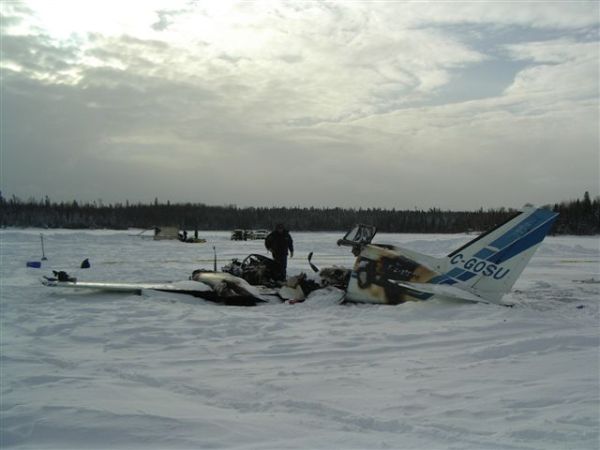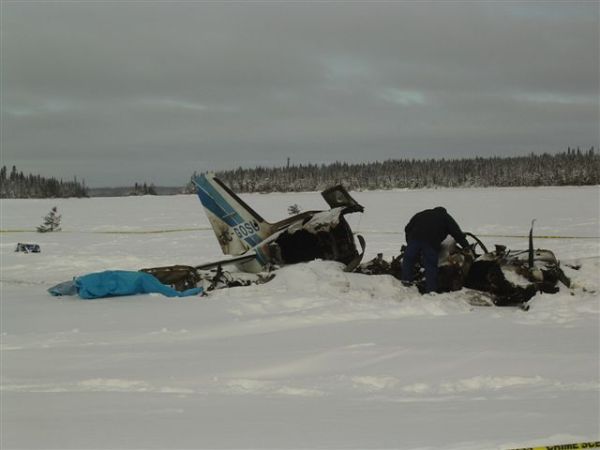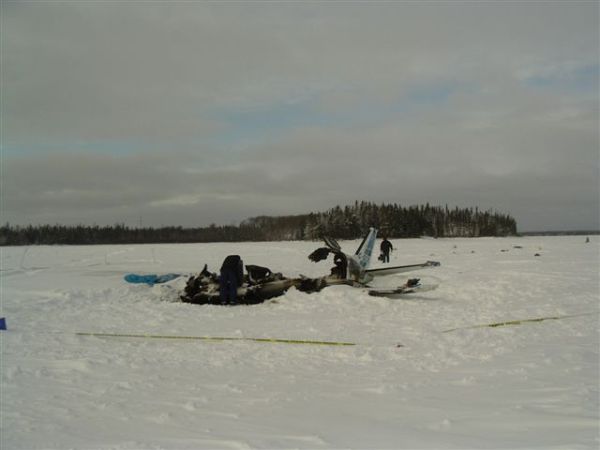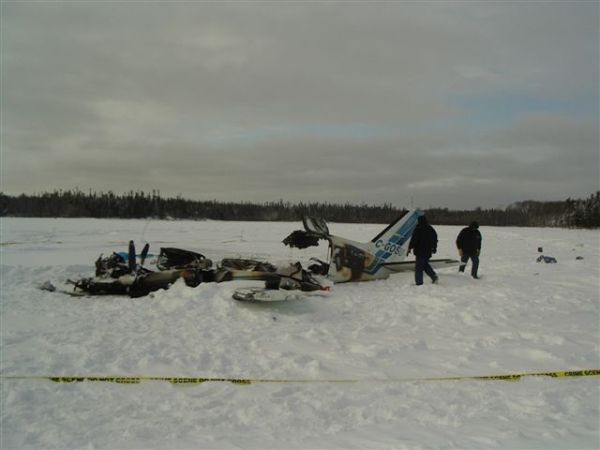Loss of control and collision with terrain
Keystone Air Service Limited
Piper PA31-350 Navajo Chieftain, C-GOSU
North Spirit Lake, Ontario
The occurrence
The Piper PA31-350 Navajo Chieftain (registration C-GOSU, serial number 31-7752148), operating as Keystone Air Service Limited Flight 213, departed Winnipeg/James Armstrong Richardson International Airport, Manitoba, enroute to North Spirit Lake, Ontario, with 1 pilot and 4 passengers on board. At 0957 Central Standard Time, on approach to Runway 13 at North Spirit Lake, the aircraft struck the frozen lake surface 1.1 nautical miles from the threshold of Runway 13. The pilot and 3 passengers sustained fatal injuries. One passenger sustained serious injuries. The aircraft was destroyed by impact forces and a post-impact fire. After a short period of operation, the emergency locator transmitter stopped transmitting when the antenna wire was consumed by the fire.
Media materials
News release
Operational pressures, adverse weather conditions, and lack of experience factored in January 2012 accident at North Spirit Lake, Ontario
Deployment notice
TSB is deploying team to North Spirit Lake, Ontario, to investigate an air accident
Gatineau, Quebec, January 10, 2012 — The Transportation Safety Board of Canada (TSB) is deploying a team to North Spirit Lake, Ontario, to investigate an accident involving a Piper PA31 (Navajo) operated by Keystone Air Service Limited. Our team is expected to be at the accident site tomorrow morning. The TSB will gather information and assess the occurrence.
Investigation information
Download high-resolution photos from the TSB Flickr page.
Class of investigation
This is a class 3 investigation. These investigations analyze a small number of safety issues, and may result in recommendations. Class 3 investigations are generally completed within 450 days. For more information, see the Policy on Occurrence Classification.
TSB investigation process
There are 3 phases to a TSB investigation
- Field phase: a team of investigators examines the occurrence site and wreckage, interviews witnesses and collects pertinent information.
- Examination and analysis phase: the TSB reviews pertinent records, tests components of the wreckage in the lab, determines the sequence of events and identifies safety deficiencies. When safety deficiencies are suspected or confirmed, the TSB advises the appropriate authority without waiting until publication of the final report.
- Report phase: a confidential draft report is approved by the Board and sent to persons and corporations who are directly concerned by the report. They then have the opportunity to dispute or correct information they believe to be incorrect. The Board considers all representations before approving the final report, which is subsequently released to the public.
For more information, see our Investigation process page.
The TSB is an independent agency that investigates air, marine, pipeline, and rail transportation occurrences. Its sole aim is the advancement of transportation safety. It is not the function of the Board to assign fault or determine civil or criminal liability.



